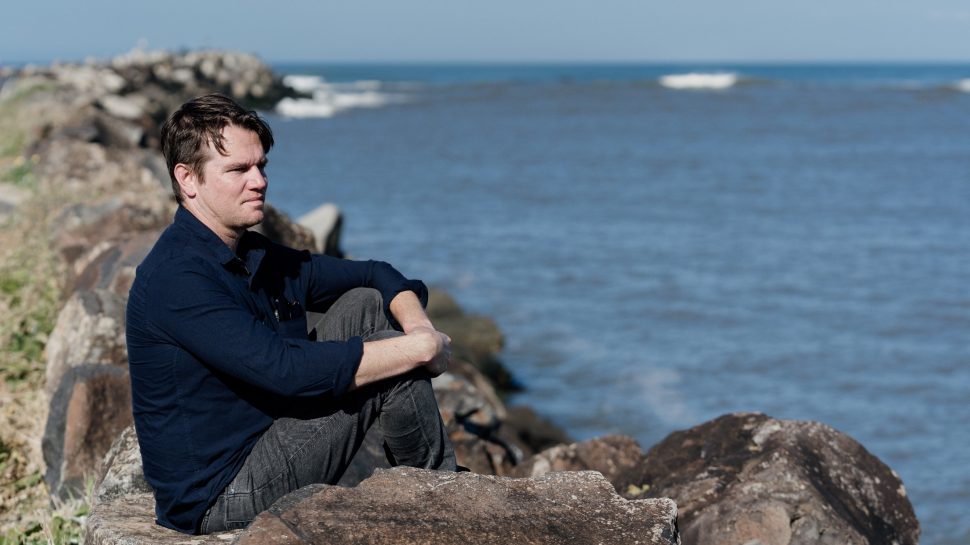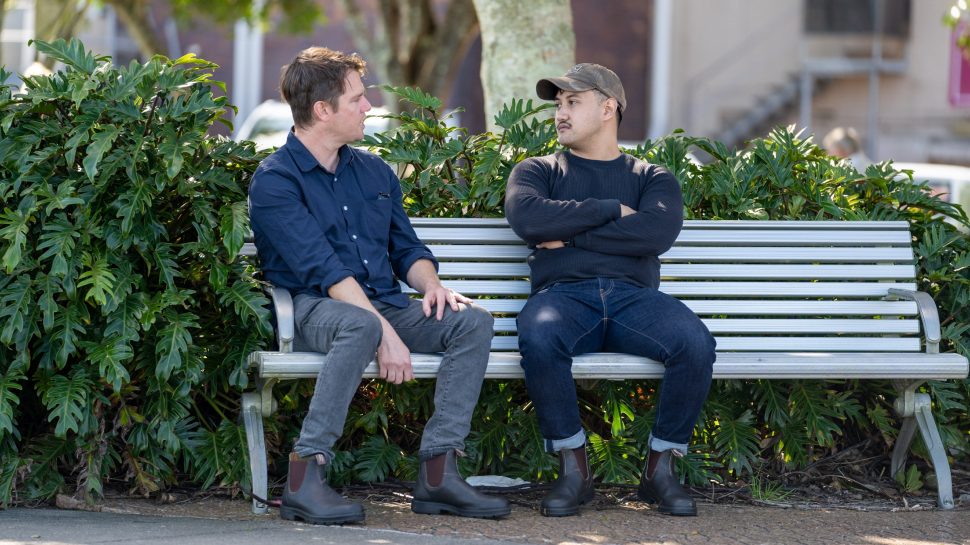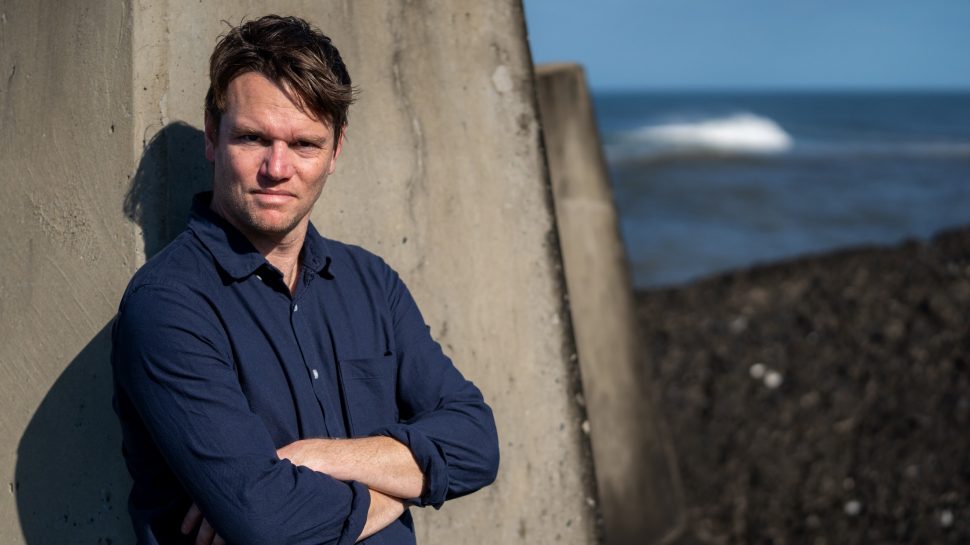“It was very hard on the senses”: The reality of living through Australia’s biggest flood
Catastrophic weather events like the floods in Lismore and the Northern Rivers region are often simply images on our TV screens. But what is it really like to live through a natural disaster and its aftermath?

James Wallace and his young family lived through one of the worst bushfires in Australian history—the summer of 2019-2020—in the remote Victorian town of Mallacoota before relocating in 2021 to the Northern Rivers region of New South Wales.
Little did he know he was soon to experience a catastrophe of a very different kind. James was living in nearby Woodburn when the Lismore floods came through, and the small town essentially became an island, with many homes going underwater.
James now works as a Community Recovery Officer with the Red Cross, helping communities to rebuild from the unprecedented floods.
An initial deluge
When the floods first hit, the rapidly rising water cut James off from his house. He was forced to watch the disaster unfold on TV as helicopters beat through the skies above the town.
“It was quite eerie having helicopters fly overhead rescuing people off roofs. We were watching on TV, and we would see them fly over where we were. It was a very surreal experience,” says James.
During the initial onslaught of a natural disaster like the Lismore floods, when the floodwaters render familiar neighbourhoods virtually unrecognisable, the body switches to fight-or-flight mode. “There's a lot of adrenaline, and that fight-or-flight response lasts quite a while,” James says.
Then, as the floodwaters recede and the full damage is revealed, a new and grim reality sets in.
An assault on the senses
Floods leave a rank smell of mud and mould behind them, along with some devastating sights. The assault on one’s senses can have a huge impact on mental health, and the trauma can linger for a long time.
“It was very hard hitting on the senses, the smell and the sight,” James says. “It’s nearly unrecognisable. Everything’s just so out of place. There were farm animals lying across the road. I’ve got two young kids, so we didn’t take them down there. I didn't want them to see that.
“To see a town underwater is confronting, but then when the water recedes, to see nearly every single house with people’s belongings out the front, it’s very confronting to see people having to throw their lives out their window.
“And it smells. It’s just thick mud and it’s not safe.”
The threat of water-borne disease
Floodwaters are often contaminated by sewage, as well as household or industrial waste and animal carcasses, bringing the very real risk of water-borne disease and pathogens. The mud left behind harbours bacteria, and it’s not uncommon for people to get sick with gastrointestinal complaints like diarrhoea and vomiting, as well as skin infections, during the clean-up process. The risk of mosquito-borne disease also increases after a flood event.1
“You can get quite sick,” James says. “You have to be really careful.”
After weeks of clean-up, led largely by volunteers who handed out gumboots before pitching in to help their neighbours, a second flood hit the region and residents were forced to repeat the process.
“The effort of spontaneous volunteers really shone through,” James says. “It was just completely overwhelming. To have complete strangers in your house, respectfully helping to clear out the place and move everything and do all the hard work from tearing out kitchens and floors and bringing you food and drinks, and then setting up donations’ hubs … those volunteers have been there since day one, since the rescue efforts, and are still there working full-time hours.”
The mental health impact
Getting back to a sense of normality can be difficult if your home and life has been upended. Even for those whose homes were spared, it’s common to experience the same feeling that others around you are feeling. Entire communities can share the trauma of a catastrophic event.
“The mental health challenges within communities after a disaster, and the effect of what trauma can do to people, is very real,” James says.
“You don't have to have lost your house. You don't have to have been there. When you have close communities, vicarious trauma is a very real thing.”

A loss of routine and control
Natural disasters don’t just destroy homes and businesses. The routine activities that usually bookmark our days—like sport, exercise and socialising—can also be lost, along with sleep and nourishing meals.
“When normality goes out the window, so does your sense of security,” James says. “And in the days and weeks afterwards, your diet and overall health are compromised. You might not look after yourself. Personal self-care can disappear without realising.
“Without those day-to-day fundamentals like food, clothing and shelter, everything else feels so much harder. Near impossible sometimes. The loss of routine does catch up with you. You may not feel the mental health impact straightaway, but it does catch up with you.”
Read more from Australian Red Cross about the things you and others might experience after a crisis and how to manage it.
Lower socio-economic areas often bear the brunt
Extreme weather events disproportionately impact lower socio-economic communities, who may not have the finances or social supports to recover from disaster. Land in flood-prone areas is often more affordable, and people living in rental accommodation can be displaced for long periods. They often struggle to find new places to live after a catastrophic flooding event.
After the Northern Rivers was flooded in 2017, 82% of people directly affected in the Lismore community came from the lowest socio-economic groups.2
James says the Lismore floods have opened existing wounds within society, exposing the severity of the housing crisis and the cost of living.
“This catastrophe has made it so much harder for people to find places to live and to deal with the rising cost of living. To be able to attend to your fundamental needs is such a huge challenge for so many people,” he says.
How Australia Post and Red Cross help on the road to recovery
To help ease the burden on those most affected by the floods and to help local communities rebuild, Australia Post partnered with Australian Red Cross to collect donations for the national floods appeal. The donations all went towards cash relief grants to help those in need with immediate issues like food, clothing and shelter. The work continues, supporting people like James as they assist communities with their recovery to ‘normality’.
“Thanks to companies like Australia Post, Red Cross can get on the ground early and start working with these communities on their recovery journey. Recovery officers like myself walk alongside and work alongside communities in their own recovery for up two years,” James says.
“I'd love to see people, families and communities get back to a sense of normality, because that is so important for mental health. It would be great to rebuild even better than they were before.”
Australia Post proudly partners with Australian Red Cross
Australia Post proudly partners with Australian Red Cross
Whenever disaster strikes, Australia Post and Red Cross are there to support and help communities get back on their feet.



